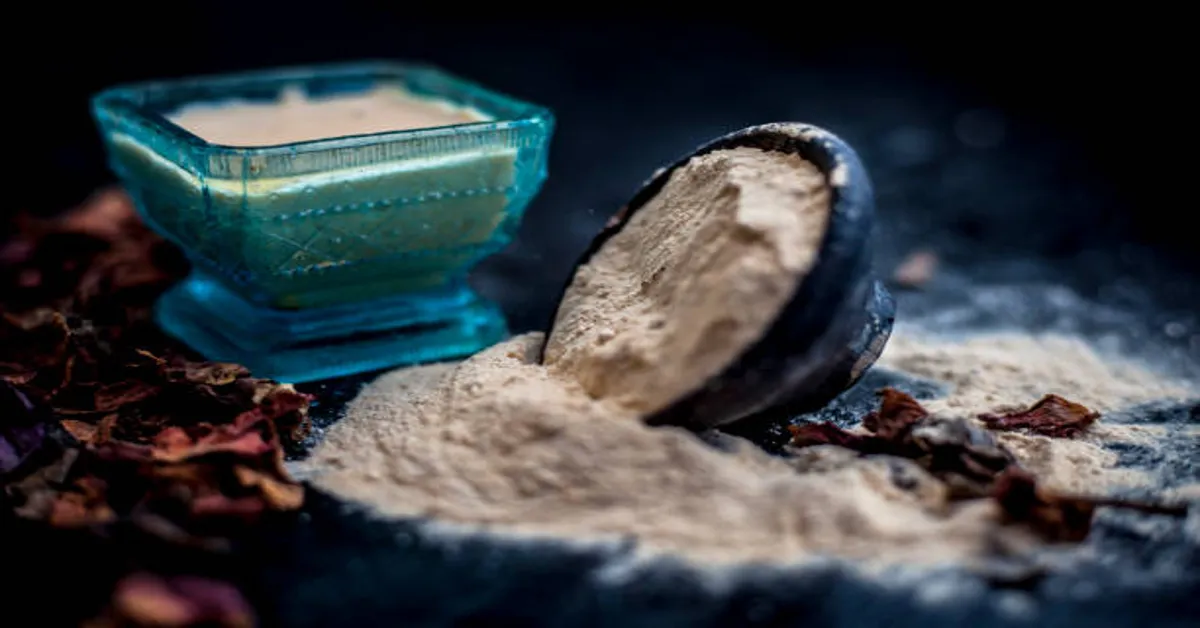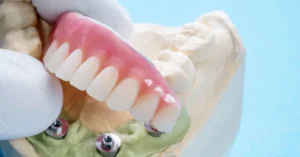In the beauty and skincare industry, the evolution of hair removal products continues to shift toward gentler, more natural alternatives. Among these, herbal wax powder has rapidly gained popularity as a safe, plant-based solution for removing unwanted hair without the harsh chemicals found in traditional waxing products. This ancient yet modernized formulation offers a convenient and skin-friendly method of depilation, drawing inspiration from Ayurvedic and herbal traditions. Unlike synthetic waxes, herbal wax powder uses nature-derived ingredients to ensure effective hair removal while caring for the skin’s health and texture.
This article offers an in-depth look at herbal wax powder, including its composition, benefits, methods of use, potential skin types it suits best, comparison with other methods, precautions, and practical tips. It’s a guide not only for those new to this product but also for individuals seeking a more conscious and wholesome self-care regimen.
What is Herbal Wax Powder?
Herbal wax powder is a finely milled blend of natural plant-based ingredients formulated to remove unwanted body hair in a gentle, non-invasive manner. It usually comes in the form of a dry powder that, when mixed with water, rosewater, or milk, turns into a smooth paste. This paste is then applied to the skin, allowed to semi-dry, and gently scrubbed or peeled off, removing hair from the surface.
Unlike chemical-laden wax strips or depilatory creams, herbal wax powders do not rely on artificial preservatives or harsh surfactants. Most formulas avoid parabens, sulfates, alcohols, and artificial fragrances. This makes them ideal for sensitive skin and environmentally conscious users.
The roots of herbal wax powders can be traced back to traditional Indian beauty rituals, where natural ingredients like turmeric, licorice, sandalwood, and chickpea flour were used to maintain smooth, clear skin. The modern revival of these practices blends ancestral wisdom with scientific research to provide a safer and more skin-nurturing alternative.
Key Ingredients in Herbal Wax Powder
While formulations may vary between brands, several core herbal ingredients are commonly found in effective herbal wax powders:
- Turmeric (Curcuma longa): Known for its anti-inflammatory and antibacterial properties, turmeric helps reduce redness and irritation while discouraging future hair growth with regular use.
- Chickpea Flour (Besan): Acts as a natural exfoliant and helps in removing fine hair and impurities. It gives the paste its thick, sticky texture.
- Licorice Root (Mulethi): Brightens the skin and works as a mild skin lightener, which is especially helpful after hair removal.
- Aloe Vera Powder: Provides hydration and soothes the skin post-waxing.
- Fuller’s Earth (Multani Mitti): Absorbs oil and dirt from pores while adding a cooling effect.
- Orange Peel Powder: Contains natural AHAs (Alpha Hydroxy Acids) that gently exfoliate and help in achieving glowing skin.
- Neem Leaf Powder: A natural antiseptic that prevents skin infections or acne after hair removal.
- Sandalwood Powder: Soothes skin irritation and enhances the fragrance naturally.
- Lemon Peel Powder: Contains Vitamin C and works to brighten the skin while tightening pores.
These ingredients are generally ground and blended in precise ratios to optimize both hair removal effectiveness and skin nourishment.
Benefits of Using Herbal Wax Powder
The benefits of using herbal wax powder over traditional waxing, razors, or chemical depilatory creams are numerous. This section covers the most significant advantages:
1. Natural and Skin-Friendly
Herbal wax powders do not contain artificial chemicals, synthetic waxes, or irritants. This makes them ideal for people with sensitive skin or conditions such as eczema, dermatitis, or rosacea. The natural oils and herbs in the formula support the skin’s natural barrier instead of stripping it away.
2. Pain-Free Application
Unlike hot wax or cold strips, which physically pull hair from the root and can cause sharp pain, herbal wax powder acts more gently. It tends to remove hair from the surface, making it less painful, and more like an exfoliating treatment.
3. Skin Nourishment and Brightening
Because of ingredients like turmeric, licorice, and sandalwood, the application process not only removes hair but also helps to detoxify, brighten, and soften the skin. It offers a dual-purpose effect—hair removal and skincare.
4. Slows Hair Regrowth
With regular use, herbal wax powder may reduce the density and speed of hair regrowth. Ingredients like turmeric and chickpea flour are known to have natural properties that weaken hair follicles over time.
5. Economical and Easy to Use
It’s often more cost-effective than salon waxing or laser hair removal. Additionally, being in powder form gives it a longer shelf life and makes it travel-friendly.
6. Suitable for All Genders and Skin Types
Men and women alike can benefit from herbal wax powder. It can be used on legs, arms, underarms, back, chest, and even the face depending on sensitivity levels.
How to Use Herbal Wax Powder Effectively
To get the best results, it’s important to follow a methodical approach. Here is a step-by-step guide:
Preparation Phase:
- Ensure your skin is clean and dry before application.
- Patch test on a small area to check for allergic reactions.
- Mix 2–3 tablespoons of the powder with water, rose water, or milk to form a thick paste.
- Optionally, add a few drops of tea tree or lavender essential oil for extra skin care.
Application:
- Apply the paste in the direction of hair growth using your hands or a flat applicator.
- Leave it on for about 10–15 minutes or until semi-dry but not hard.
- Once the surface becomes sticky to touch, gently scrub it off in the opposite direction of hair growth using your fingers or a wet cloth.
Post-Removal Care:
- Rinse thoroughly with cool water.
- Pat dry and apply a soothing moisturizer or aloe vera gel.
- Avoid sun exposure, swimming, or chemical-based products for at least 24 hours.
This method ensures a cleaner, softer skin surface while minimizing pain and skin trauma.
Comparison with Other Hair Removal Methods
| Feature | Herbal Wax Powder | Traditional Wax | Razor/Shaving | Hair Removal Cream | Laser Treatment |
|---|---|---|---|---|---|
| Natural Ingredients | Yes | No | No | No | No |
| Pain Level | Low | High | Low | Low | Medium |
| Long-term Effect | Moderate | Good | Poor | Poor | Excellent |
| Cost | Low | Medium | Low | Medium | High |
| Skin Benefits | Yes | No | No | No | No |
| Regrowth Speed | Slower with use | Slower | Fast | Fast | Significantly reduced |
| Skin Sensitivity Suitability | High | Low | Medium | Low | Medium |
Who Should Use Herbal Wax Powder?
Herbal wax powder is suited for:
- Individuals with sensitive or acne-prone skin
- People looking for cruelty-free, vegan, and eco-friendly beauty alternatives
- Teenagers or beginners who want to avoid painful waxing
- Pregnant or nursing women looking for chemical-free grooming methods
- Men who wish to maintain body grooming with minimal irritation
It can be used safely on arms, legs, underarms, chest, back, and in some formulations, even on the face. However, care must be taken not to use harsh or coarse powders on delicate areas without specific recommendations.
Precautions and Tips
While herbal wax powder is generally safe, here are a few precautions to ensure maximum benefit and safety:
- Do a patch test: Even natural ingredients can cause allergies.
- Avoid broken or inflamed skin: Do not use on cuts, rashes, or burns.
- Don’t over-scrub: Gentle rubbing is enough to remove hair.
- Moisturize afterward: Always follow with a calming cream or oil.
- Avoid makeup or strong treatments post-use: Especially if used on the face.
Storage and Shelf Life
Most herbal wax powders have a shelf life of 6 to 12 months, depending on their packaging and ingredients. Store the powder in a cool, dry place, away from direct sunlight and moisture. Once mixed into a paste, it should be used immediately and not stored for future use, as it contains no preservatives.
Environmental Benefits of Herbal Wax Powder
An often overlooked benefit of using herbal wax powder is its minimal environmental impact. Unlike plastic-coated wax strips or chemical-filled tubes, the product is typically biodegradable. Many brands use recyclable or compostable packaging, reducing the user’s ecological footprint. By switching to a powdered herbal alternative, users contribute to sustainability in the personal care industry.
Future of Herbal Waxing
As the demand for clean beauty grows, more consumers are shifting toward products that are transparent in ingredients and gentle on the skin. Herbal wax powder stands out as a shining example of this transition. With increasing innovation, future formulations may offer targeted solutions for specific skin types, enhanced fragrances using essential oils, and even quicker results through optimized blends.
Given its multi-purpose benefits, such as exfoliation, brightening, and natural hair retardation, herbal wax powder may soon become a staple in every holistic grooming kit.
ALSO READ: Vidmattapp: A Complete Guide to Features, Usage, and Safety
FAQs About Herbal Wax Powder
1. Is herbal wax powder suitable for facial hair removal?
Yes, herbal wax powder can be used on facial hair if the formula is gentle and specifically labeled for facial use. Avoid scrubbing too hard and always follow with a soothing toner or aloe vera gel.
2. How often should I use herbal wax powder for best results?
Most users find that using it once every 10 to 15 days maintains smooth skin and gradually reduces hair regrowth. Overuse may dry out the skin, so moderation is key.
3. Can I use herbal wax powder during pregnancy?
Yes, since it’s made of natural ingredients and doesn’t involve heat or harsh chemicals, herbal wax powder is considered safe during pregnancy. Still, always consult your doctor if you have sensitive skin or hormonal changes.
4. Does it remove hair from the roots like regular waxing?
It primarily removes hair from the surface or just below the skin. While not as deep-rooted as traditional waxing, consistent use weakens follicles and delays regrowth.
5. Can I make herbal wax powder at home?
Yes, DIY recipes can be made using turmeric, chickpea flour, and sandalwood powder. However, professionally formulated powders offer better consistency, stability, and results.









